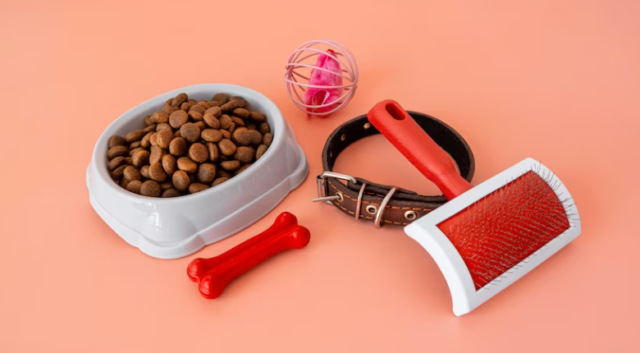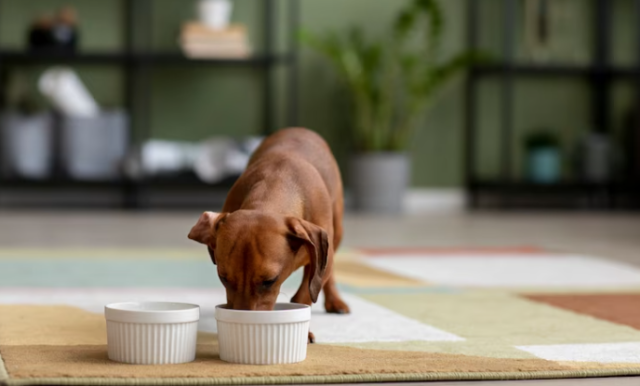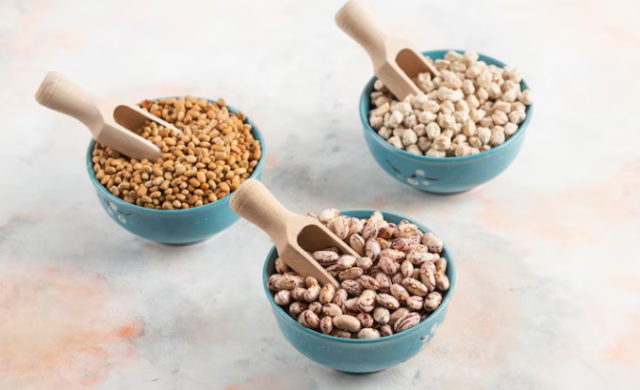The right food storage is essential for taking care of your beloved buddy. A dependable dog food storage container preserves your pet’s meals pleasant and fresh while also aiding with the organization. This article will discuss the advantages of utilizing a dog food storage container, walk you through the process of choosing the best one, and offer helpful advice for preserving the highest possible food quality. Let’s start now!
Importance of Proper Dog Food Storage
Ensuring your dog’s food remains fresh and free from contaminants is essential for their overall health and well-being. A high-quality dog food storage container plays a vital role in preserving the nutritional value and taste of the food, keeping it safe from pests, moisture, and air exposure.
Preserving Nutritional Value
Just like humans, dogs benefit from consuming fresh food. Proper storage containers shield the kibble from oxygen and light, preventing oxidation and nutrient degradation. This ensures that your furry companion receives the optimal nutrition they need to thrive.
Preventing Pest Infestation
Unsecured dog food can attract unwanted pests, such as ants, rodents, or insects. A durable and airtight storage container acts as a barrier against these intruders, safeguarding your pet’s food from contamination and preventing potential health issues.
Selecting the Right Dog Food Storage Container
When choosing a dog food storage container, several factors should be considered to ensure you find the most suitable option for your needs. Here are some key aspects to keep in mind:
Size and Capacity

Consider the amount of dog food you regularly purchase to determine the appropriate size and capacity of the storage container. Larger breeds may require more substantial containers to accommodate their larger portions.
Material and Durability
Different materials, such as plastic, metal, or glass, offer various advantages. Plastic containers are lightweight and often come with airtight seals, while metal containers are sturdy and resistant to pests. Glass containers provide excellent visibility and are easy to clean.
Airtight Seal
An airtight seal is essential to keep your dog’s food fresh and protected. Look for containers with secure locking mechanisms or silicone gaskets that ensure tight closure, preventing air and moisture from reaching the food.
Easy Accessibility and Convenience
Consider the container’s design and features, such as wide openings, ergonomic handles, or built-in measuring scoops. These elements enhance convenience and make it easier for you to serve your pet’s meals effortlessly.
Tips for Maintaining Optimal Food Quality
Proper storage doesn’t stop at choosing the right container. Here are some additional tips to maintain the freshness and quality of your dog’s food:

Store in a Cool and Dry Place
To prevent moisture buildup and food spoilage, store the container in a cool and dry area, away from direct sunlight and extreme temperatures.
Regular Cleaning and Inspection
Periodically clean the storage container to remove any residue or crumbs that could attract pests or cause bacterial growth. Inspect the container for any signs of damage and replace it if necessary.
First In, First Out (FIFO) Method
Follow the FIFO method by using the oldest food first and placing newer bags at the back. This practice helps ensure that the food doesn’t expire or go stale before it can be consumed, maintaining freshness and quality.
Avoid Transferring Food Bags
It’s best to keep the dog food in its original packaging and place the entire bag inside the storage container. Transferring the food directly into the container may introduce air and moisture, potentially compromising its freshness.
Monitor Expiration Dates
Always check the expiration dates on the dog food bags and ensure that you use the food before it expires. This guarantees that your pet receives the freshest and most nutritious meals.

Conclusion
A reliable dog food storage container is a valuable investment for any pet owner. Preserving nutritional value, preventing pest infestation, and maintaining freshness, it ensures that your furry friend enjoys tasty and healthy meals. Remember to consider factors like size, material, airtight seals, and convenience when selecting the right container. Additionally, follow proper storage practices and regularly inspect and clean the container to maintain optimal food quality. With the right storage container, you can provide your dog with the nourishment they need while keeping their meals organized and fresh.
FAQs
Q1: Can I store canned dog food in a storage container?
No, it's not recommended to store opened cans of dog food in a storage container. Instead, cover the can with a tight-fitting lid or transfer the remaining contents to a suitable airtight container and refrigerate.
Q2: How long should dog food be kept in a container?
The specific dog food and its expiration date determine how long it can be stored. To keep the food fresh and suitable for ingestion, heed the instructions listed by the manufacturer on the packaging.
Q3: Can I store something for a long time in a plastic container?
As long as the plastic containers have airtight seals and are composed of food-grade materials, they can be utilized for long-term storage. However, it's crucial to keep an eye out for any wear or damage that can impair the container's functionality.
Q4: Before utilizing the dog food storage container for the first time, should I wash it?
Yes, washing the storage container in warm, soapy water before using it for the first time is advised. This aids in clearing the manufacturing process of any potential pollutants or leftovers.
Q5: Can I store other kinds of pet food in a dog food container?
Yes, as long as the container is fully cleaned and marked for that particular usage, you can store different kinds of pet food in a dog food storage container, like cat food or bird seed.
Read also
- Top 10 Must-Have Dog Camping Gear for Your Next Adventure
- Unraveling the Mystery: All About the Scooby Doo Dog Breed
- Discover the Fascinating Turner and Hooch Dog Breed: A Perfect Blend of Loyalty and Comedy”
- Puppy Barking: Understanding and Managing Your Furry Friend’s Vocalizations
- Hunting Dog First Aid Kit: Essential Supplies for Your Canine Companion
- Crusty White Dog Breed: Unveiling the Unique Characteristics
- How to Stop a Dog from Jumping Up on Guests
- Guide to Choosing Canned Dog Food for Sensitive Stomachs
- Tough Dog Toys: Durable Toys for Your Pup | Buy Today
- Unveiling the Fascinating World of Griffon Dog Breed | A Complete Guide
- 7 Basic Dog Commands: A Guide to Training Your Pup
- Best Dog Food for Goldendoodles: Your Guide to Optimal Nutrition
- Chihuahua Puppies Care: What You Need to Know?
- Best Dog Food for Labrador Retrievers: Providing Optimal Nutrition
- Dog Breeding : An Ultimate Guide To Choose The Best
- Unlock Duck Hunting Secrets: Most Effective Dog Breeds
- Unveiling the Enchanting Lady and the Tramp Dog Breed: A Tale of Elegance and Playfulness
- Lab Shiba Inu Mix: No 1 Unique and Lovable Canine Companion!
- Corgi vs Shiba Inu – Which Breed Is Right for You?
- Stop Dog Chewing Paws Now! Effective Home Remedy for Happy Pups







